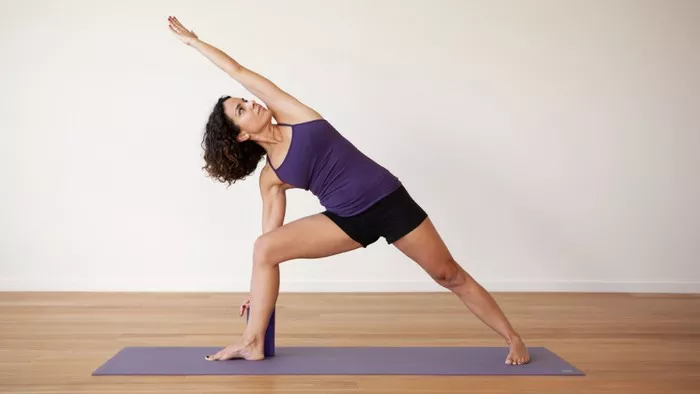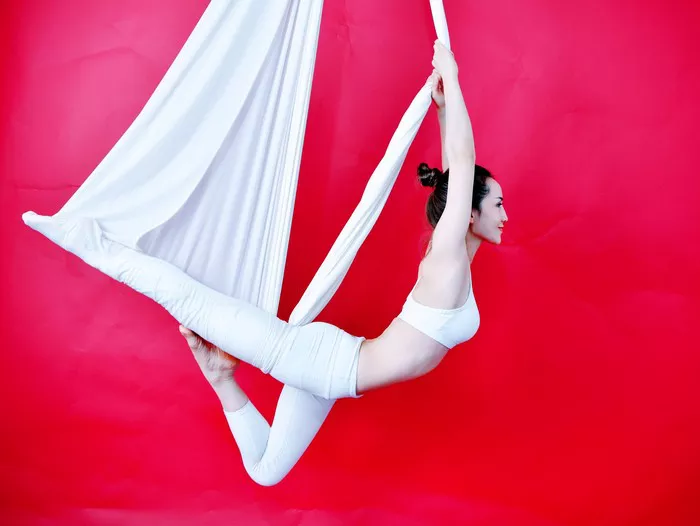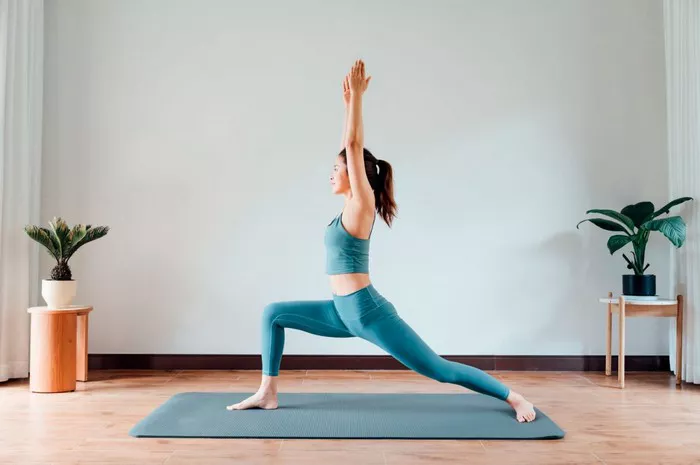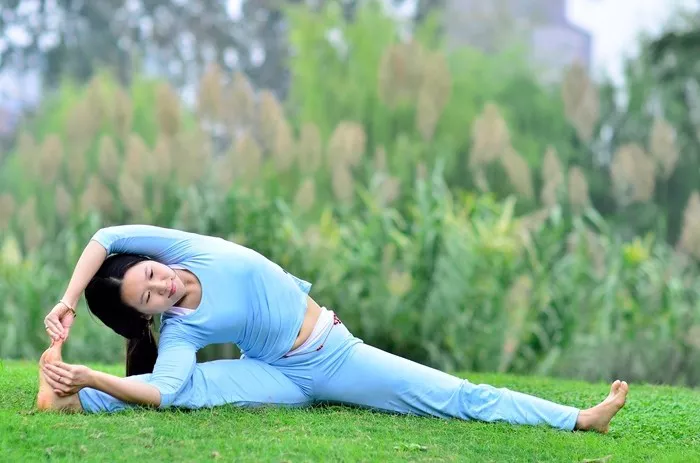Origins and Symbolism
Side Angle Pose, known as Parsvakonasana in Sanskrit, finds its roots in traditional Hatha yoga texts like the Hatha Yoga Pradipika and the Gheranda Samhita. The name itself reflects its structure: “Parsva” meaning “side,” “Kona” meaning “angle,” and “Asana” meaning “pose.” Its symbolism extends beyond the physical realm, representing the balance between stability and fluidity, strength and surrender.
In yogic philosophy, each pose carries symbolic significance. Side Angle Pose embodies the concept of reaching outward while grounding down, symbolizing the harmony between opposing forces. The elongated side stretch encourages practitioners to extend energy outward, while the grounded stance cultivates a sense of rootedness and stability.
Physical and Mental Benefits
The practice of Side Angle Pose offers a multitude of physical and mental benefits, making it a valuable addition to any yoga routine.
1. Strengthens the Legs and Core: Side Angle Pose engages the quadriceps, hamstrings, and glutes, promoting lower body strength and stability. The core muscles are activated to maintain balance and alignment.
2. Improves Flexibility: The deep stretch along the side body, hips, and groin enhances flexibility and range of motion, alleviating tension and tightness.
3. Opens the Chest and Shoulders: As the chest opens and the shoulders roll back, Side Angle Pose counteracts the effects of prolonged sitting and hunching, promoting better posture and respiratory function.
4. Stimulates Digestion: The gentle compression of the abdomen in Side Angle Pose massages the internal organs, facilitating digestion and detoxification.
5. Enhances Concentration: The focused attention required to maintain proper alignment in Side Angle Pose cultivates mindfulness and concentration, quieting the fluctuations of the mind.
6. Promotes Emotional Release: As practitioners breathe into the deep stretch of Side Angle Pose, they may release stored tension and emotions held within the body, experiencing a sense of catharsis and emotional liberation.
7. Fosters Inner Strength: The challenge of holding Side Angle Pose builds resilience and inner strength, empowering practitioners to face adversity both on and off the mat.
Variations and Modifications
One of the beauties of yoga lies in its adaptability to suit practitioners of all levels and abilities. Variations and modifications of Side Angle Pose allow individuals to tailor the pose to their unique needs and limitations.
Variations:
1. Extended Side Angle Pose (Utthita Parsvakonasana): In this variation, the lower hand reaches to the floor or a block on the outside of the front foot, while the upper arm extends overhead, creating a longer line of energy from the fingertips to the back heel.
2. Bound Side Angle Pose (Baddha Parsvakonasana): By binding the arms behind the back, practitioners deepen the stretch across the chest and shoulders while challenging balance and stability.
Modifications:
1. Using a Block: Placing a block under the lower hand can provide support and stability for practitioners with limited flexibility or mobility in the hips or hamstrings.
2. Bending the Front Knee Less: For those with tight hips or knees, keeping a gentler bend in the front knee can reduce strain and discomfort while still reaping the benefits of the pose.
Step-by-Step Instructions
Follow these step-by-step instructions to practice Side Angle Pose safely and effectively:
- Begin in Warrior II Pose (Virabhadrasana II), with the right foot forward and the left foot back, hips squared toward the side of the mat.
- Exhale as you bend the right knee directly over the right ankle, coming into a deep lunge.
- Keep the right knee stacked over the right ankle as you bring the right fingertips to the floor on the inside of the right foot.
- Inhale as you reach the left arm overhead, extending through the fingertips while keeping the chest open.
- Engage the core and lengthen the spine, creating space between the ribs and the hips.
- Press firmly through the outer edge of the back foot while grounding down through the outer edge of the front foot.
- Hold Side Angle Pose for 5-10 breaths, maintaining steady breathing and focusing on the alignment of the pose.
- To release, press into the feet and inhale as you rise back up to Warrior II. Repeat on the opposite side.
Precautions and Contraindications
While Side Angle Pose offers numerous benefits, it may not be suitable for everyone. Practitioners with the following conditions should approach the pose with caution or avoid it altogether:
1. Knee or Hip Injuries: Individuals with knee or hip injuries should be mindful of the deep bend in the front knee and the external rotation of the hip in Side Angle Pose. Modifications such as reducing the depth of the lunge or using props for support may be necessary.
2. High Blood Pressure: As Side Angle Pose involves a deep stretch and mild inversion, individuals with high blood pressure should avoid lowering the head below the heart to prevent a sudden increase in blood pressure.
3. Low Back Pain: Those with low back pain should approach Side Angle Pose with caution, focusing on maintaining length in the spine and avoiding excessive compression in the lumbar region. Modifications such as using a block for support or reducing the depth of the lunge can help alleviate strain on the lower back.
Conclusion
In conclusion, Side Angle Pose embodies the essence of balance, strength, and mindfulness in yoga practice. By exploring its origins, symbolism, physical and mental benefits, variations and modifications, step-by-step instructions, and precautions and contraindications, practitioners can unlock the transformative potential of this foundational asana. Whether you’re a seasoned yogi or a beginner on the mat, Side Angle Pose invites you to embrace the journey of self-discovery and holistic well-being.





















